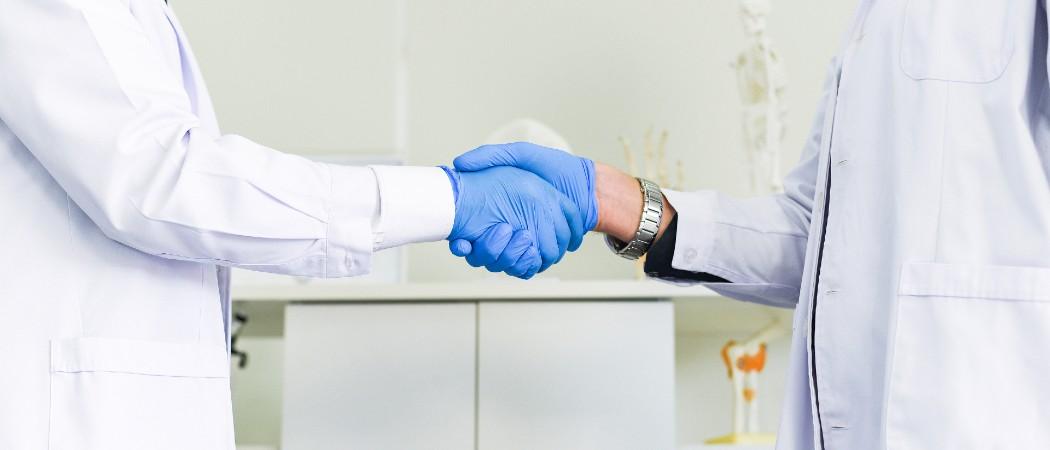An accelerator for digital health companies involving ten regions across Europe is the first project to be funded through the Interregional Innovation Investment programme. Now stakeholders are looking for some fine tuning in how the scheme operates

After a hesitant start, the EU’s Interregional Innovation Investment (I3) scheme is finally gathering speed. The first project to receive support has been announced and the first call for proposals under a capacity-building strand is due to be published in December. While broadly welcoming the scheme, interested groups want to see improvements in the work programme for 2023 - 24, which is expected to be published shortly.
Having primed regions to work on their innovation strengths with Smart Specialisation Strategies, the Commission conceived I3 as a way of bringing together regions with common interests. The scheme draws on the Regional Development Fund to support investment projects between regions that aim to deliver products to the market at high technology readiness levels, with a focus on green transition, digital transition and smart manufacturing. It will also devote a small part of its budget to capacity building for international cooperation.
Interest groups such as the European Association of Research and Technology Organisations (EARTO) see I3 as a useful, if unproven addition, to the repertoire of innovation schemes in Europe. “It is still very new, but it supports this idea that regions across Europe can do something concrete, such as an innovation project that pools their resources,” said Lula Rosso, EU affairs manager at the VTT Technical Research Centre in Finland. “It’s also a more interesting proposition for the developed regions, because it involves cooperation on something concrete and achieving something together.”
The European Regions Research and Innovation Network (ERRIN), sees I3 as useful in addressing the demand from regions for funds to internationalise Smart Specialisation initiatives and to help close the innovation gap in Europe.
It is also seen as positive that I3 is outside Horizon Europe’s Widening package, since it will reach more of the regions on the far side of the gap.
“Less performing countries don’t have a big share of Horizon, but in cohesion policy we have the biggest share,” said Joanna Kubiak, senior policy officer in the Brussels office of the Wielkopolska region of west-central Poland, and a member of ERRIN’s board. “We all have our smart specialisation strategies, so this is a really important instrument. We just need to get through this phase where it feels a little bit complicated and difficult to set up a project.”
I3 is the first time that the Commission’s directorate general for Regional and Urban policy (DG Regio) has managed an innovation programme of this sort. Some of the stops and starts in its implementation are put down to the learning curve involved.
Prevention, prediction and remote care
Nearly a year separated the first call for proposals and the launch on 3 October of the first project to be funded by I3, DIGIT-PRE, an accelerator programme for small companies specialising in digital health products.
It brings together partners in the five developed regions of Skåne and Västerbotten in Sweden, Nord Brabant and West Netherlands in the Netherlands, and Pest in Hungary with three transition regions of Hauts de France and Nouvelle-Aquitaine in France, and Southwest Finland, and the two less developed regions of Norte in Portugal and Romania’s Northwest. While Pest is considered a developed region, it was selected to be part of the project with a broader reach into less-developed regions in Hungary in mind.
DIGIT-PRE builds on a cross-sector approach developed in the Horizon 2020 project Cross4Health, which supported small companies to apply knowhow from the aerospace, energy and creative industries to the development of personalised consumer healthcare products. Concluding in 2020, this project helped 60 SMEs get closer to market.
“Since then, we have we have found very few opportunities to try out those practices again, until now,” said Magnus Wallengren, who is coordinating DIGIT-PRE from Innovation Skåne, the innovation company of the regional healthcare provider in the south of Sweden.
I3 is “a rare opportunity to try the cross-sectoral approach, and to do that with an emphasis on investment in companies, to try and find the blank spaces between sectors, create bridges between them and find new potential that could not be realised before,” Wallengren said.
DIGIT-PRE will support 30 small companies with consumer digital health products that promote prevention, prediction and remote care, whether paid for directly or through healthcare providers. As in Cross4Health, the idea is to pick up innovations from other sectors that might make a contribution in healthcare. That aspect of the project means it is open both to innovations making their way to market for the first time, and to existing products and services with the potential to be adapt adapted.
“A company might have a mature product on the market, used in another setting, and they would need to go back, adapt and then validate it for a preventive healthcare application,” said Wallengren. “From the health perspective, we are starting from technology readiness level (TRL) 6, broadly the prototype stage, and we seek to help them to grow until TRL 8 or 9, so that they can get very close to market within the project’s accelerator.”
One example from Cross4Health was a company that already had an app that helped children be more active. “They were able to adapt their solution so that they could address challenges that obese children have in their daily lives, promote helpful activity in the context of the whole family, and have a better dialogue with care providers such as obesity clinics,” Wallengren said.
In addition to having cross-over innovations, candidate companies must also have the potential and interest to internationalise. “The main aim is to help them look at other markets, and to unlock other capacities that they might not have access to at the moment,” said Wallengren.
There will also be an effort to attract companies which might otherwise be wary of engaging with the bureaucracy of EU programmes. “We want to have a direct dialogue with companies, to understand their challenges, and what they would gain through applying and being admitted to the accelerator,” said Wallengren said.
Companies joining the accelerator will get money for development work, along with access to tailored support from external services. That might mean consultancy on regulatory issues, for example, or access to living labs, demonstration sites and testbeds. They will also get support in looking for further investment, and help accessing the regional markets represented in the project.
While limited to the participating regions, there should be a ripple effect. “In some ways these regions and their markets have a local context that makes them quite unique, but they are also generalities that we can work with, for example how public procurement works in a pan-European and national context, or how you find investment, both for individual companies and to enhance our capacity as innovation intermediaries,” said Wallengren.
The partnership has evolved through previous collaborations, such as Cross4Health and an I3 pilot project run last year.
“There are certain elements of governance of the innovation ecosystems in Romania and Hungary, which are part of our consortium, which we had not really considered before and which we find very interesting,” Wallengren said. “There are also specific capabilities, for example how to assess different health technologies, that some of our partners in those regions are providing as unique competencies to our partnership.”
Room for improvement
While ERRIN is broadly positive about the projects emerging from the first calls, it would like to see improvements. Further clarification is at the top of its list, with more done to make I3 intelligible to potential beneficiaries who are not tuned in to what comes out of Brussels.
There also needs to be more clarity on the roles that regions in transition can play in consortia. So far these have not been as well defined as the parts that will be played by leading regions and less developed regions. For some topics, a transition region might be a leader, but on another topic it could face some of the same challenges as a less developed region. Wielkopolska is such a region and Kubiak said, “We are afraid that we could get caught in the middle.”
Also on the wish list is a desire to see I3 well aligned with other schemes targeting regional innovation ecosystems, both already active or under development, such as the Innovation Valleys proposed in the European Innovation Agenda.
The capacity building side of I3 should be reinforced in future calls. “Talking to the regions, we saw a lot of interest in the capacity building strand, even from the more developed regions,” Kubiak said. “Even though these are seen as the strongest regions, there is still an interest from them to do more when it comes to capacity building for international cooperation in the area of smart specialisation.”
EARTO’s reservations about I3 are harder to address, since they are baked into the rules of participation. In particular, the method of cost reimbursement makes the scheme unsustainable for its members and to date, few are engaging with it.
For Rosso, this is a missed opportunity, particularly when it comes to research and technology infrastructure hosted by research and technology organisations and technical universities. “The most exciting thing would be to pool resources between regions, including research and technology infrastructure in the developing regions, supporting its use by SMEs seeking to develop and then scale-up their products.”
This does not exclude I3 projects from providing access to infrastructure as a service, as is planned by the DIGIT-PRE project, but the contribution this can make is diminished. “If you have the infrastructure and competences for innovation in the core of consortium, it guarantees that the capability is there for dialogue and co-development,” Rosso said. This kind of partnership is particularly helpful for technologies at the piloting stage.
Elsewhere in the Ecosystem…
- French start-up Biomemory has raised €5 million in seed investment to advance its work on data storage using DNA, an approach that promises low energy, low carbon data centres. The company, founded in 2021, is working with two CNRS/Sorbonne University patents licensed through the technology transfer agency SATT Lutech. The funding round was led by eureKARE and the French Tech Seed Fund.
- The European Commission has begun a review of the Technology Transfer Block Exemption Regulation, which exempts certain agreements and practices from the EU’s general competition rules. The aim is to evaluate how the regulation and related guidelines are working in practice, and to help the Commission decide what it should do when the regulation expires in April 2026. Views are invited by 23 December 2022, with a public consultation to follow in the second quarter of 2023.
- Early stage cancer start-up Neobe Therapeutics has raised £520,000 in pre-seed equity funding to advance its work on live biotherapeutics that remove barriers to immune infiltration in solid tumours. The company was created in 2021 from a collaboration between the charity Cancer Research UK and venture builder Deep Science Ventures. The equity round was led by Discovery Park Ventures and Nadav Rosenberg, and will enable preclinical safety and efficacy studies on Neobe’s prototype, which is targeted at advanced colorectal and pancreatic cancers.





 A unique international forum for public research organisations and companies to connect their external engagement with strategic interests around their R&D system.
A unique international forum for public research organisations and companies to connect their external engagement with strategic interests around their R&D system.